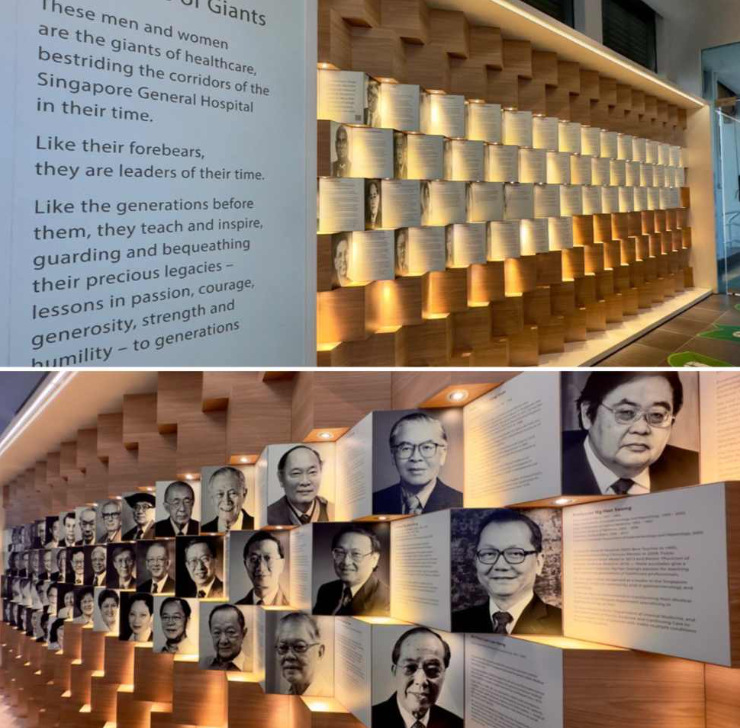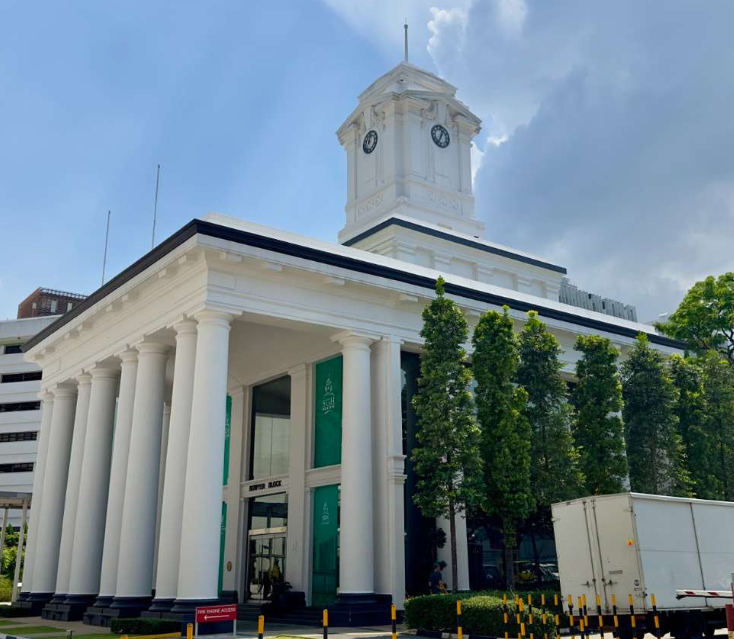National monuments of Singapore: Bowyer Block

What is a National Monument? Who gazettes them? How many national monuments are there in Singapore?
To date, the Preservation of Sites and Monuments, a division of National Heritage Board, has identified and gazetted 75 buildings, structures and sites of national significance as an integral part of Singapore’s built heritage.
Dates built:
Milestones:
Date gazetted: Nov 11, 2009
The origins of institutionalised medical care in Singapore date back to the establishment of the first General Hospital in 1821.
Initially a wooden shed in the British cantonment near present-day Bras Basah Road and Stamford Road, it was rebuilt four times at various sites over the next 40 years before being situated at Sepoy Lines in 1882, where the barracks of the Indian soldiers (aka sepoys) were located.
Due to the hospital's elevated position, it was also known as See-pai Poh (in Hokkien) or Sei-pai Por (in Cantonese), meaning "Sepoy Hill".
Singapore's first medical school, the Straits and Federated Malay States Government Medical School, was founded in 1905 in the hospital's former Female Lunatic Asylum wing.
To accommodate the growing number of students, Tan Teck Guan Building was later constructed. In 1920, the school was renamed King Edward VII College of Medicine and relocated to the newly completed College of Medicine Building in 1926.
During this period, the hospital was reconstructed and officially reopened as Singapore General Hospital on March 29, 1926 by Sir Laurence N. Guillemard, then-Governor of the Straits Settlements. This event marked a pivotal moment in Singapore's medical history, transitioning from serving only military and police personnel and seamen to becoming a public medical institution accessible to locals of all races and social backgrounds.
The newly constructed hospital comprised three distinct blocks — the Upper, Middle, and Lower Blocks — housing 800 beds in total.
Facilities included operating theatres, kitchens, an outpatient block, a pathology laboratory, and nurses' quarters, with modern lifts also installed. This new hospital symbolised the social and scientific progress of Singapore at the time.
During the Second World War, SGH's water supply was cut off, leading to the deaths of hundreds of patients who were later buried in a mass grave within the hospital grounds. Following Singapore's fall, invading Japanese forces took over the hospital, making it the main surgical hospital for the Japanese in Southeast Asia.
After the war, the Upper, Middle, and Lower Blocks were renamed Bowyer, Stanley, and Norris Blocks, respectively. This honoured Dr John H. Bowyer, Dr Cuthbert Stanley, and Dr Victor Norris, who had served at the hospital before the war and died during the Japanese Occupation.
Dr Bowyer was the Chief Medical Officer of SGH during Singapore's surrender. He had restructured and prepped local hospitals for wartime conditions, and managed casualties at the Mental Hospital in the initial five weeks after the surrender of the British.
Imprisoned in Changi Prison in January 1944, Dr Bowyer was tortured by the Japanese Military Police (known as Kempeitai) for distributing food without permission. Gravely ill, he was moved to Sime Road Camp in October 1944, and died on Nov 1 at the age of 43. His final resting place was at Bidadari Cemetery.
Over the years, Bowyer Block served as the hospital's main administration building. Its other facilities included the staff quarters, some male and female wards, and various departments and clinics, including the School of Nursing, the Department of Renal Medicine, and a small X-ray department.
Due to Singapore's growing population and the need for more advanced medical equipment, the hospital underwent a modernisation phase in the 1970s, replacing most of its blocks.
On Sept 12, 1981, then-Prime Minister Lee Kuan Yew officially opened present-day SGH, with Bowyer Block's central section being the only remaining part of the original 1926 structures.


Currently, Bowyer Block houses the SGH Museum, showcasing the extensive history and rich heritage of medical practice in Singapore.

Designed by Government Architect Major Percy H. Keys, who also designed the Former Fullerton Building and the College of Medicine Building, Bowyer Block originally had wing extensions, one of which was demolished in the early 1980s.
Its clock tower is its most iconic feature, with four clock faces, each flanked by Doric pilasters and topped by a pediment (the triangular upper part of the front of a classical building) adorned with beautiful mouldings of festoons (a chain or garland of flowers, leaves, or ribbons, hung in a curve as a decoration).
The facade's grandeur is further enhanced by colossal Tuscan columns lining the two-storey portico (a porch leading to the entrance of a building).
Regular visiting hours are daily from 9am to 6pm, and 9am to 1pm on Saturday. The building is closed on Sunday.
Entry is free.
ALSO READ: National monuments of Singapore: Former Ministry of Labour Building
This article was first published in Wonderwall.sg.